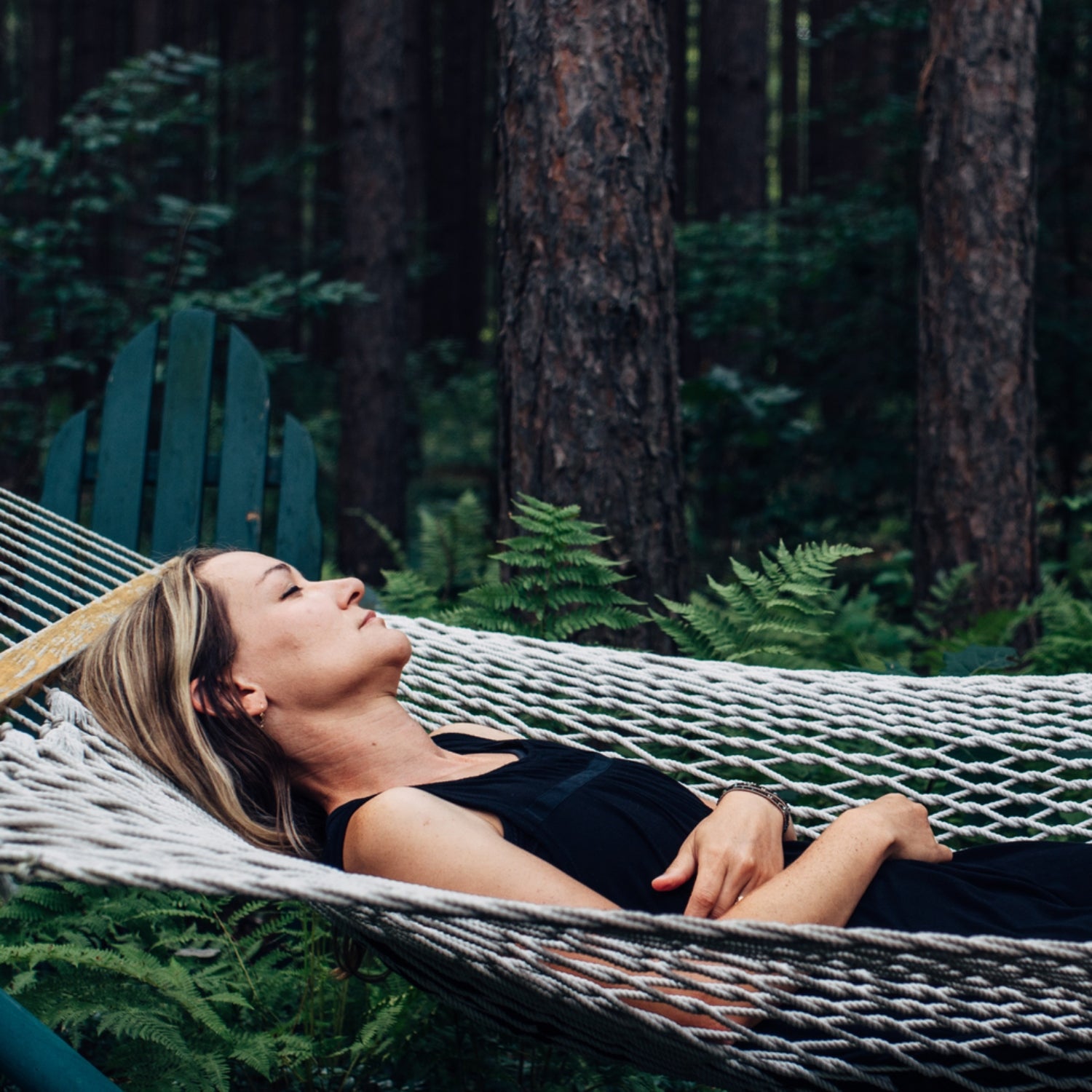If you’ve been on TikTok recently, you’ve probably heard about brown noise, the alternative to white noise that’s popping up all over the internet as the potential secret to better sleep and improved concentration. In one recent video, a girl documents her reaction to hearing the frequency for the first time: “Is this real?,” the text on the TikTok reads. “Where did the thoughts go?”
In contrast to white noise, which contains all sound frequencies, brown noise is defined by its lower tone and added bass. Some describe it as reminiscent of the inside of an airplane, rushing water, or a wind tunnel. If you don’t find white noise particularly soothing, brown noise might be a more appealing alternative. Scientific research specific to brown noise is still in the preliminary stages, but there’s no shortage of internet testimonials from people who claim that the sound has improved their focus and cleared their head. We consulted some sleep and psychology experts to find out whether brown noise can help you concentrate, feel more relaxed, and get better sleep.
What’s the Difference Between Brown and White Noise?
Sound frequencies operate on a spectrum. Some noises may include higher tones, while others have more bass. “If you’re living in a space where you’re trying to mask louder or higher- frequency noises, then white noise may be the best option,” Sarah Silverman, a behavioral sleep medicine specialist, says. For this reason, it can also be a good travel companion in unfamiliar environments, like a hotel or an airplane.
If you’re searching for an in-between option, you may want to consider pink noise, which is slightly lower than white noise and at a higher pitch than brown noise. On TikTok, users describe pink noise as wind or a wave. It’s a gushing sound, almost like a constant stream of air blowing into your ear.
Can Brown Noise Help With ADHD?
Despite the hype on TikTok, there isn’t any research yet on a potential link between brown noise and ADHD. ADHD can cause restlessness and hyperactivity, making it difficult to zero in on a particular task. Patrice Berry, a licensed clinical psychologist, says brown noise can help to drown out other distracting sounds and improve concentration. In other words, it can offer the same benefits of white noise, just in a different form. “Some people find certain frequencies to be more relaxing,” Berry says, adding that others may find the same frequency unpleasant. “Brown noise just gives another option.” While more research is needed to confirm any definitive connection, brown noise could be a powerful tool to help increase focus in people with ADHD, Berry says.
Is Brown Noise Beneficial for Sleep?
There isn’t much research on the connection between the different frequencies and sleep. In her work, Silverman says she’s seen that pink noise is the best aid for falling asleep, followed by brown, and then white noise. Since brown noise is associated with improved concentration, it may not be the best option for sleep, according to Silverman.
How Do I Know Which Frequency Is Right for Me?
There’s no magic test to determine which sound will work best for you. It’s all about trial and error. (We’ve provided a sampling of each one below.) “One thing won’t work for everyone,” Berry says. For example, if you have tinnitus, a ringing in one or both ears, pink and brown noise frequencies are better options than white noise, according to Silverman.
A good way to test out each of these sounds is with a sound machine. Devices that offer the full sonic spectrum will give you the ability to try out a range of frequencies. If nothing feels quite right, you could also try black noise, the absence of any frequency. And if you’re someone who finds total silence relaxing, more power to you.
We’ve included samples of brown, pink, and white noise below.
Brown noise:
Pink noise:
White noise:

